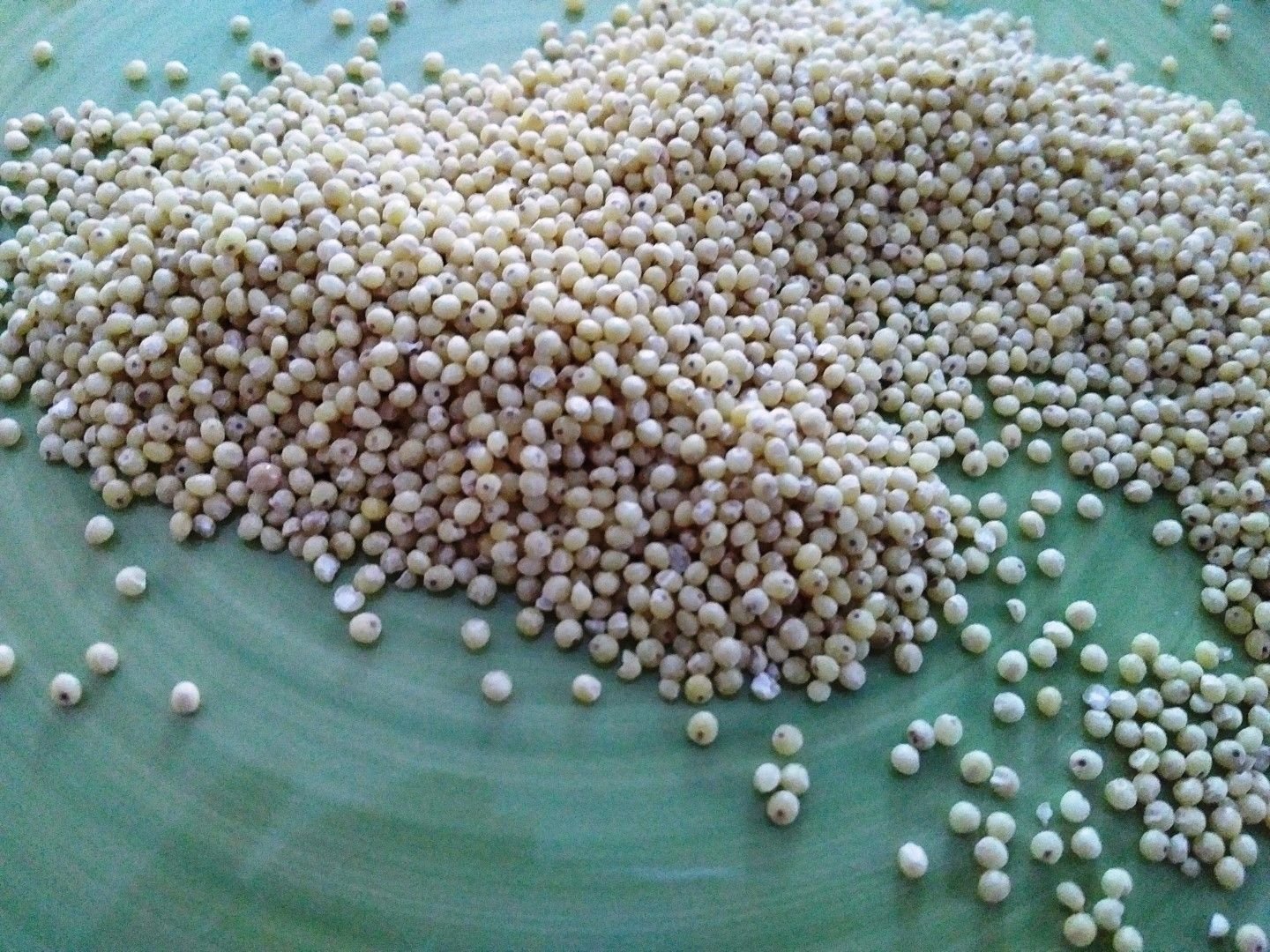I will always remember a scene where, during a conversation with a friend who had just embarked on a new diet, we were talking about various possible recipes with the limited list of allowed ingredients she had during the initial detox period, and I mentioned millet. The third friend, who had been silent until then, sprung up and said: What is millet?
Up to this point, I assumed that most people had, at the very least, heard of millet. I realised, that this was not the case, which has prompted this blog post to answer her question: What is millet?
What is millet?
Although it is commonly described as a grain, millet is in fact a seed from a grass originating in Africa and dry regions of Asia because it is easy to grow and requires little water. There are different varieties of millet, and the one most commonly found on supermarket shelves is a small light golden grain which has been hulled, and cooks faster than most grains and other seeds. In the US it is often referred to as bird seed, not just because of its aspect, but also because it is given to birds as food. In parts of Africa, millet was traditionally the staple food and replaced couscous (which originates from the north of Africa).
This seed is naturally gluten free, high in fibre and has a low G.I. (glycaemic index, ie. it doesn’t cause a sugar rush) so it is perfect for those people who are allergic to gluten and want to keep their blood sugar levels low, unlike couscous, which is wheat semolina.
The health benefits of Millet
According to Traditional Chinese Medicine (TCM) millet is cooling and diuretic, it strengthens kidney energy and builds yin fluids, moistening dryness. These properties alone make it the perfect food to consume during the summer months, and in preparation for the autumn.
Referred to as the Queen of Grains, this seed has a sweet buttery taste once cooked, with a light tinge of saltiness. It boasts alkalizing properties, balancing acidity, which is why it has been used in the treatment of stomach and spleen-pancreas ailments. As a natural anti-fungal it is excellent in the treatment of Candida and is reputed to retard bacterial growth in the mouth thus being used also as a breath sweetener by some.
Other characteristics and health benefits include:
- It is rich in fibre
- It is rich in minerals and vitamins including copper, phosphorus, magnesium, Vitamin B-6, iron and potassium
- It is useful in the treatment of diarrhoea, vomiting, indigestion and diabetes
- It soothes morning sickness (roasted first and then prepared in a soup)
How to introduce millet into your everyday diet
Millet should be cooked with water and very little salt for savoury dishes, and without salt for sweet ones. For best results follow the packet instructions, or cook as you would rice in risotto dishes, adding a little hot water at a time. Approximate cooking times are 20 to 25 minutes with a couple of minutes for resting time, with a ratio of 1:2.5 millet to water.
Here are some ideas to get you started:
1. Cook some millet porridge instead of your ubiquitous oats for breakfast;
2. Replace the rice in traditional rice risotto with millet;
3. Serve it as a side in lieu of mashed potatoes;
4. Use it to make couscous dishes instead of wheat semolina cous cous or spelt cous cous;
5. Turn it into the base for a warm salad with your choice of lightly cooked vegetables;
6. Use it as an accompaniment to your curries instead of basmati and other varieties of white rice;
7. Cook with dried fruits and spices for a succulent dessert treat which brings out its sweet buttery nature (recipe on page 95 of Anna’s Kitchen).
A tip to remember is that millet is best served warm soon after it is cooked, to prevent it from sticking into one large sticky mass.
As you can see, millet, like rice and many grains, is versatile and can be added to a wide range of dishes both sweet and savoury. Don’t be afraid to use it and experiment and share your recipes with us!


